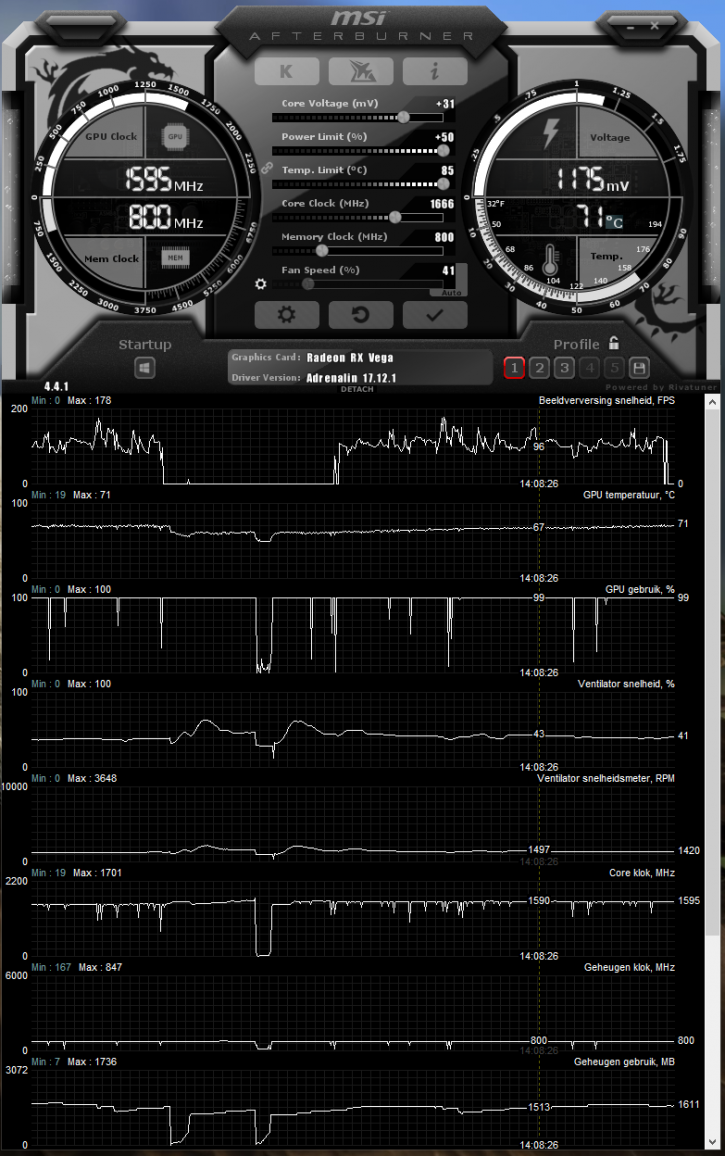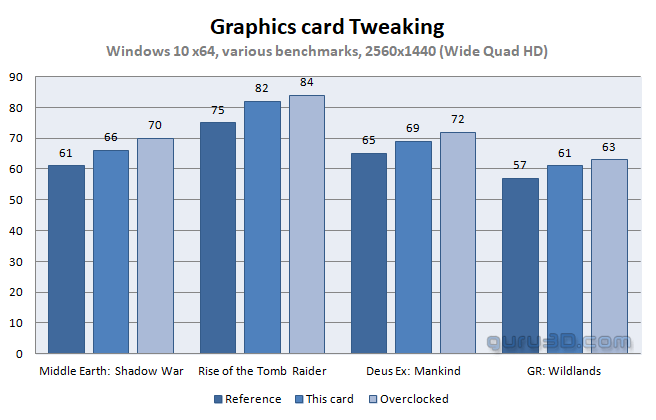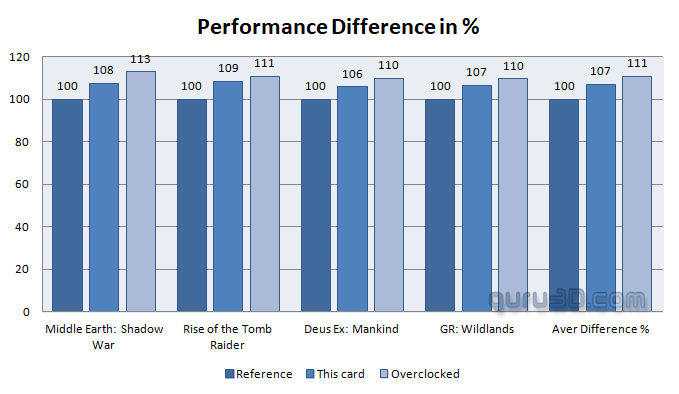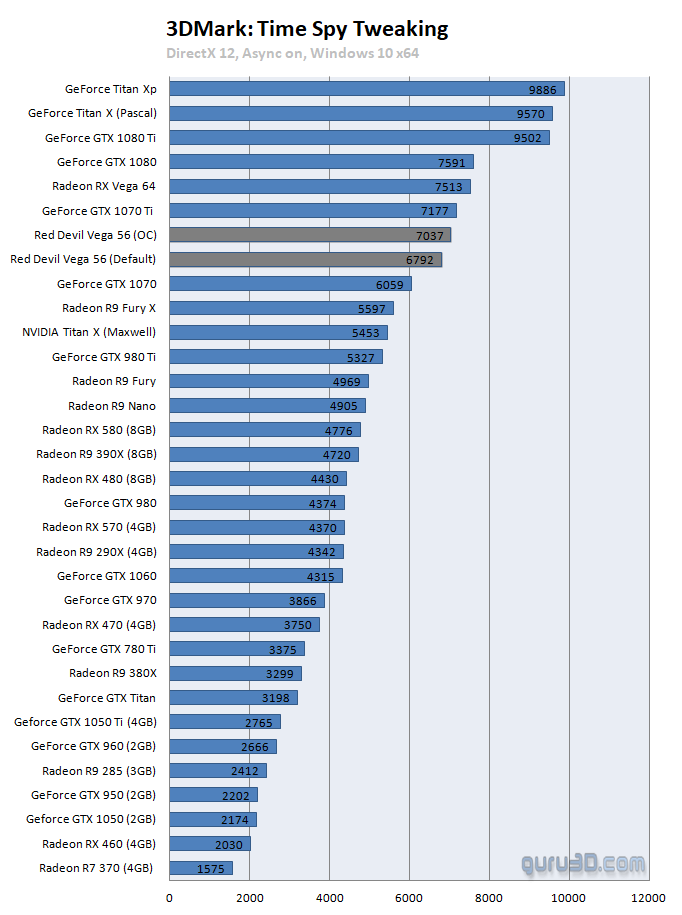Overclocking The Graphics Card
Overclocking The Graphics Card
Traditional overclocking - As most of you know, with most video cards you can apply a simple series of tricks to boost the overall performance a little. Typically you can tweak on core clock frequencies and voltages. By increasing the frequency of the video cards memory and GPU, we can make the video card increase its calculation clock cycles per second.
 |
||
| Original | This sample | Overclocked |
| Boost Clock: 1471 MHz | Boost Clock: 1526 MHz | Max Boost Clock: ~1600 MHz |
| Memory Clock: 800 MHz | Memory Clock: 800 MHz | Memory Clock: 800 MHz |
Overclocking Vega graphics cards has been daunting ever since the start. We gave it a try with AfterBurner. Mind you that HBM2 memory tweaking is disabled at AMD driver/BIOS level. Even when you think you tweaked it, it does absolutely nothing.
The GPU core freq, however, can be tweaked mildly. Our stable end results have been tested with the BIOS at Default and OC mode, both however behave the same. We recommend defaults + a tweak for slightly better acoustics. This is much noisier and consumers more power. Once overclocked keep this in mind; due to the dynamic nature of the boost clock, your frequency is not fixed. Limiters and monitors, temperature, load, power, and voltages will continuously alter a maximum clock state.
- Voltage: +31 Mv (ASIC quality defines this - sometimes undervolting helps as well with some Vega GPUs).
- Power Limit 150% (your biggest gain in perf comes from this one, but at the cost of power). We measure roughly ~350 Watt in power consumption on the graphics card with this tweak (!!)
- Temp target 85 Degrees C
- Core Clock 1666 Mhz for that evil demonic plot
- Mem clock = not relevant (disabled by AMD)
At these settings, we hover at the ~1.60 GHz domain on the dynamic boost clock.
Above the performance increases measured from reference, to the factory tweak, towards the manual overclocked condition as described above. Overall you'll gain a little more, at the cost of a lot of power consumption tbh.
Above, you can see the relative performance difference in-between a reference card, then the AIB card with its respective applied tweak and then to the right our overclocked results plotted as a percentage. The AMD reference card is considered 100% performance wise. To the far right where you can see Aver Difference %, this is the result of the four games tested and averaged out.
- The card runs, give or take, 7% faster compared to the reference.
- Once we tweak it manually it is roughly 11% faster compared to the reference card and thus 4% faster compared to the default clocks.




